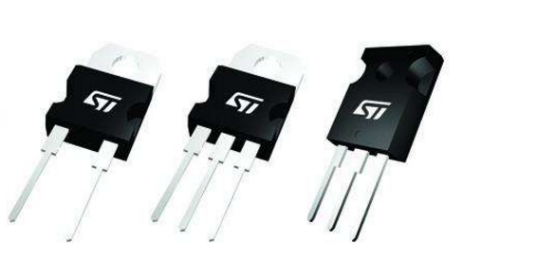SiC power components expand application cost with electric vehicle development
Benefiting from the increasing demand in the electric vehicle market, SiC (silicon carbide) power components are considered to replace high-voltage IGBTs in response to the demand for high voltage, high frequency and low loss technology, which can be divided into: SiC-SBD (SiC- Schottky diodes, SiC-MOSFETs, Hybrid-SiC modules (IGBT+SBD), and Full-SiC modules. The market value will rise year by year and is estimated to grow to about $3 billion in 2025.

SiC power components expand their applications with the development of electric vehicles, and the cost issue is the main consideration.
SiC power components are superior to IGBTs in terms of performance, but the manufacturing cost is high. Due to the inconsistency in material stress of SiC in epitaxial fabrication, the wafer size is enlarged, and there is a stress stretching limit of the epitaxial layer bonding surface. The problem is that the lattice damage affects the yield, so the mainstream size of the wafer is still maintained at 4 inches or 6 inches, and the cost advantage of large-size wafers cannot be obtained.
In the past, SiC power components were mainly based on solar energy and PFC (Power Factor Correct) Power Supply. In recent years, due to the trend of electric vehicles, SiC power components have attracted much attention due to their small size, reduced module weight, good heat dissipation performance, and better performance. . Although the price is high, from the system level, the improvement of motor conversion efficiency and the increase of charge density are attractive to electric vehicle manufacturers. If the cost is properly controlled, it is suitable to become an important component for electric vehicles to enhance power and endurance.
At present, the voltage range of SiC power components is 600-1200V, which corresponds to the power system used by electric vehicles, including DC-DC Converter, Inverter, On-board Charger, etc., and in the range above 1700V, it corresponds to infrastructure and industrial applications. For example, fast charging piles, solar inverters and high-speed railway inverters are expected to accelerate the expansion of the application level after the cost problem has been improved.
Europe and the United States IDM factory actively expands SiC product diversification and seizes the supply chain market
The development of SiC power components of IDM manufacturers in Europe, America and Japan is analyzed. Under the combination of materials, process technology and market demand, SiC power components have developed earlier and have key technology patents. The product line layout of ROHM and Fuji Electronics is complete, and ROHM has previously claimed to complete the optimization of SiC cost and increase the willingness of OEMs to purchase. Toyota and Denso cooperate in SiC power components, develop and measure with their own automotive product lines, and also expect to improve SiC Power component usage.
The IDM manufacturers in Europe and the United States are partly attributed to the layout of power semiconductors in the past. They have positive effects on the market demand for SiC power components in the electric vehicle field of Infineon and STMicroelectronics, and continue to publish automotive SiC power components and related information. In the past, ON Semiconductor, which focuses on the 400V field, also announced automotive SiC power components, which is expected to gain a share in the new supply chain market.
Overall, due to factors such as manufacturing cost and capacity, the penetration rate of initial SiC power components in power semiconductors is not high. It is estimated that there will be significant growth after 2020. For IDM manufacturers, the product line will continue to be diversified. Reducing manufacturing costs and increasing production capacity will be the focus of expanding the market.

